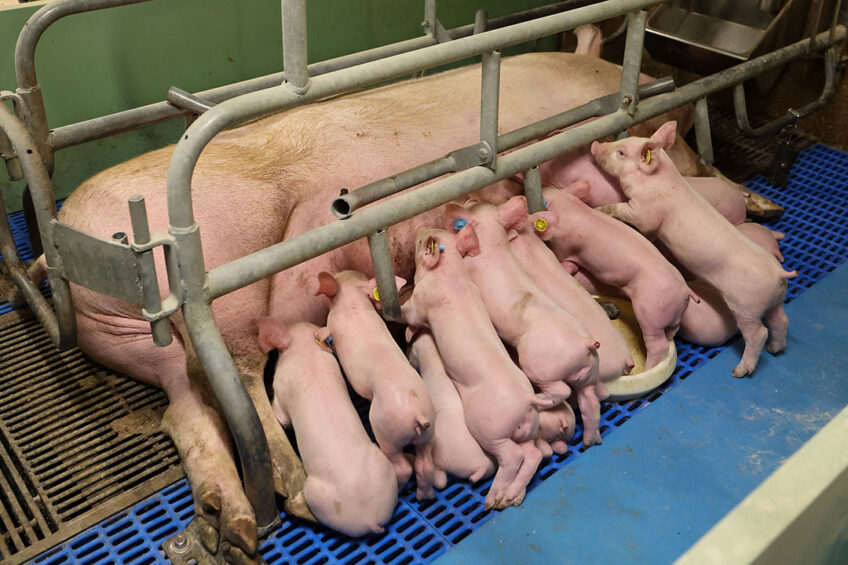Dutch research into timing and split-weaning

Researchers from the Netherlands recently evaluated the combination of the timing of grouping and split-weaning to improve weight gain of low-birthweight piglets in multi-suckling systems.
Multi-suckling systems are an alternative for conventional single litter housing systems to improve animal welfare. However, piglets in multi-suckling systems show bodyweight variation at weaning. Low-birthweight piglets have the potential to catch up their growth using a combination of intervention strategies applied in early and late lactation. Grouping at a younger age leads to a higher occurrence of cross-suckling. This causes stress and negatively impacts weight gain. Split-weaning is the earlier removal of about half of the piglets per litter from sows to increase milk intake and pre-weaning performance for the remaining piglets.
Data collection
The team analysed 8 batches of 5 multiparous sows and their 160 piglets. They put them into 4 control and 4 treatment groups in a multi-suckling system. The researchers grouped control piglets on day 8 post-partum without split-weaning, and grouped treatment piglets on day 13 post-partum. The 3 heaviest piglets per litter were split-weaned on day 35 post-weaning.
They used only 1 multi-suckling unit in each batch of the experiment. Each multi-suckling unit contained 5 farrowing pens, and a communal multi-suckling area including a lying area, a feeding area, and a dunging area. Forced intermittent suckling was conducted during days 28-34 post-partum. The team applied voluntary intermittent suckling during days 35-49 post-partum.
They weighed all piglets on day 0, 6, 27, 35 and 48 post-partum. The researchers also recorded the feeding behaviour of the piglets, including the percentage of time spent on contacting sow feed and piglet feed during sow feeding times. In addition. suckling behaviour including the frequency of presence at teats at both their own mother and cross-suckling sows and the number of successful suckling bouts per sow were calculated.
The team evaluated cross-suckling related variables and the number of skin lesions, piglet mortality until weaning, and individual dry matter intake and milk intake.
The impact of the timing of grouping
The timing of grouping did not affect bodyweight, bodyweight gain, and the inter batch variation in bodyweight. Furthermore, the team did not observe any effects of grouping age on snout damage, skin lesions, teat presence, and percentage of time spent on contacting solid feed during sow feeding times. However, piglets had frequent aggressive behaviour, resulting in skin lesions within 1 day after grouping on day 10 post-partum. In addition, later grouping increased crushing incidences shortly after grouping.
The impact of split-weaning
Low-birthweight piglets in the split-weaned group drank more milk than low-birthweight piglets in the control group. In addition, low-birthweight piglets in the split-weaned group had greater feed intake and were more frequently present at front and middle teats than high-birthweight piglets.
During feeding times, piglets in split-weaned group spent less time on contacting piglet feed and they had lower damage scores on snout than control piglets. In addition, piglets in split-weaned group were more involved in cross-suckling and more often present at the front and middle teats of both their own mother and alien sows than piglets in control group.
An earlier split-weaning age for high-birthweight piglets before day 35 was more helpful to increase milk intake and thus the growth performance. After split-weaning, more teats were available for piglets, which resulted in a higher number of piglets present both at their own mother and alien sows trying to attain milk from foreign mothers, especially when their own mother had a low milk production. Further research is necessary to alter the age of split-weaning to reduce bodyweight variation in multi-suckling systems.







